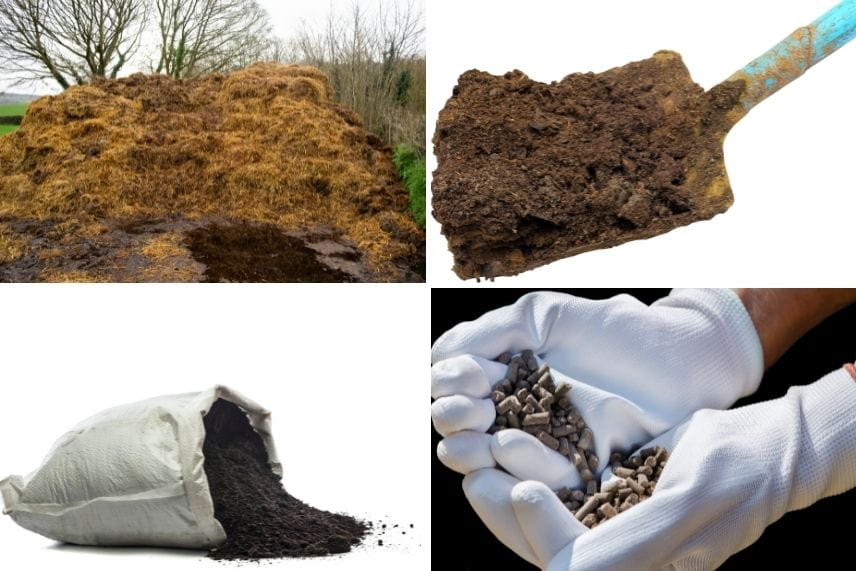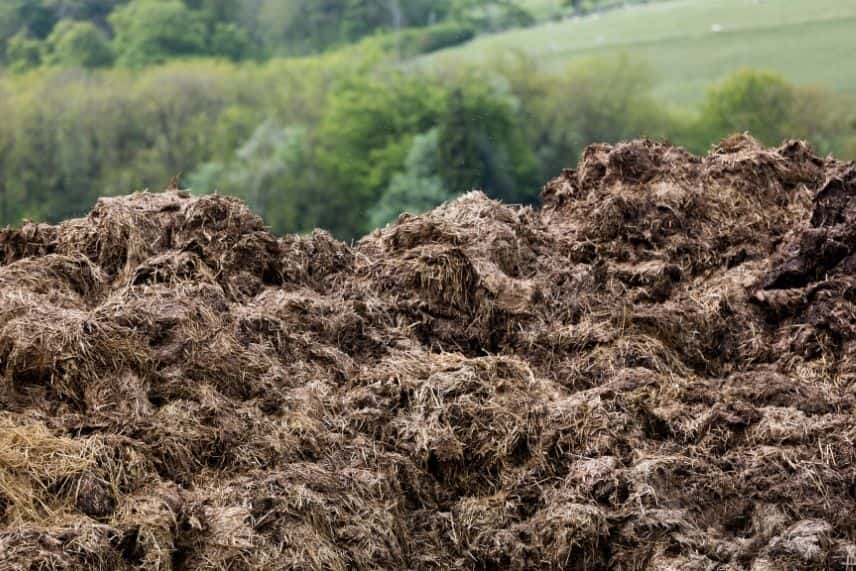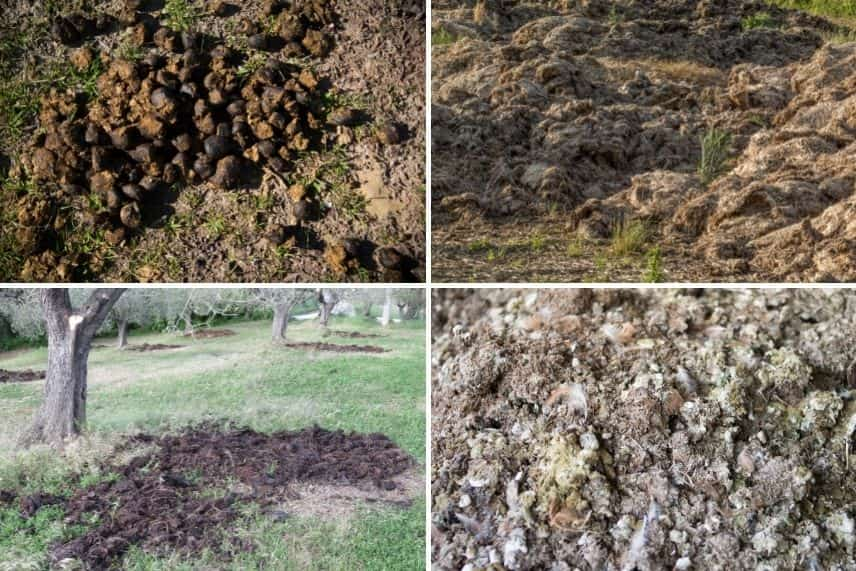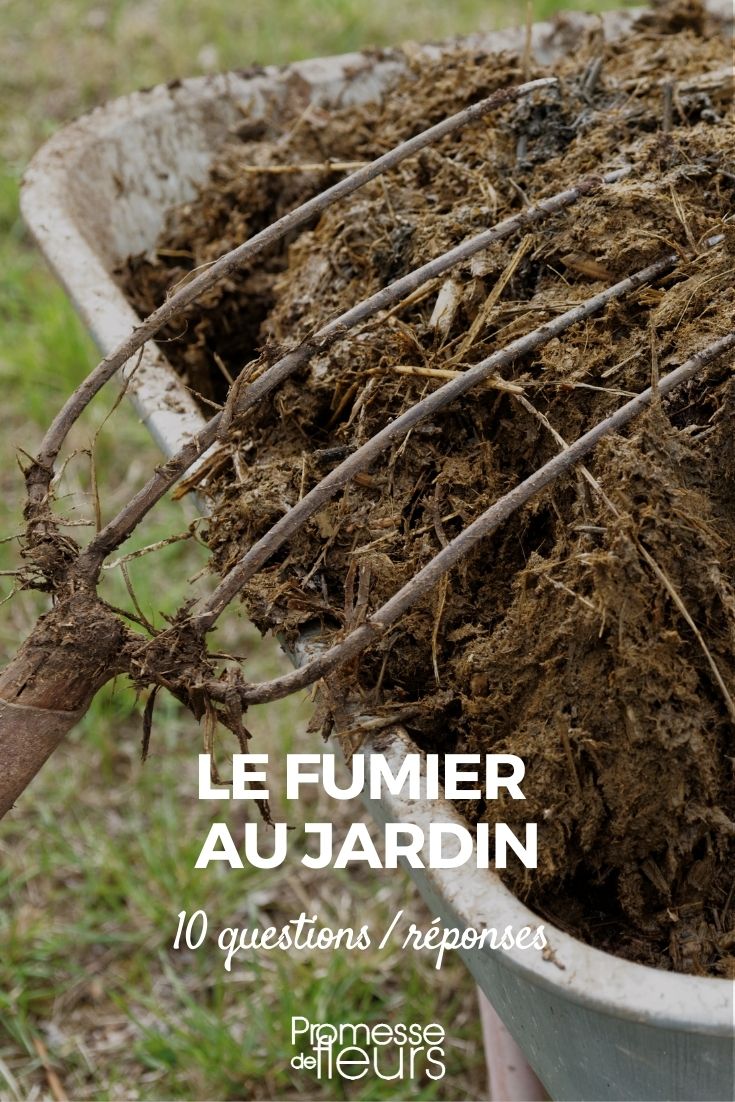
Manure in 10 Questions / Answers
All you need to know about manure, its composition, uses, and benefits
Contents
Archaeological data, agronomic writings, and even literature mention manure as one of the main fertilisers or organic amendments used since antiquity by farmers. Derived from animal husbandry, this manure is a mixture of excrement and urine, combined with litter, most often straw. Whether from horses, cows, sheep, or poultry, manure is always widely appreciated and used in family vegetable gardens. But ultimately, what do you really know about manure? Do you know its benefits in the vegetable garden, the best time for spreading, its differences from compost, the quantities to use… and which manure to choose? We explain everything in 10 questions and answers.
What exactly is manure?
Manure is an organic matter, derived from both animal and plant sources. It is indeed composed of animal excrement and their litter, such as cereal straw, sawdust, or wood pellets…
There are three types of manure: fresh manure, mature manure, and composted manure. Fresh manure is manure that has just been produced by animals. Mature or aged manure is when it is piled up for several months to decompose. This decomposition process occurs when the animal waste reaches at least 50 °C. The composted manure is decomposed manure mixed with compost, supplemented with branches or leaves, and watered occasionally.
Finally, there is also pelleted manure, an interesting alternative for those who cannot find fresh, decomposed, or composted manure. Virginie explains the use of this pelleted manure in the garden, while Olivier shows us how and when to spread it.

Manure can be used fresh, decomposed, composted, or in pellet form
If you have the opportunity to obtain manure from a farmer or an equestrian centre, prefer those who practice organic farming and inquire about the treatments administered to the animals. It is not uncommon to find traces of antibiotics or dewormers in the manure. Similarly, fresh manure may sometimes contain germs, bacterium, or viruses that can be transmitted to vegetables. Caution is therefore essential!
What is manure really used for?
Because it is made up of fibrous materials rich in carbon (straw) and manure, manure primarily serves to amend the soil and improve the structure of the earth. Thus, manure adds a bit of lightness to heavy, clayey soil. Conversely, it will give consistency to light soil. Manure thus facilitates water retention and allows the soil to be more permeable to air.

As an amendment, manure improves soil structure
Beyond this aspect, manure has a fertilising role due to its richness in nitrogen, phosphorus, and potassium, as well as calcium and magnesium, minerals that are useful for plant growth.
Finally, manure nourishes the soil through the addition of humus. It indeed facilitates the work of microorganisms and earthworms.
What are the different types of manure?
Certainly, manure can be made from different animal excrements:
- The horse manure is made from equine droppings. It is a manure rich in nutrients and mineral salts, particularly nitrogen and potassium, warm and very light, as it consists of a high proportion of dry matter. It is therefore perfect for heavy, clay soils. It is also used for creating hot beds in frames, of which Solène shares all the secrets.
- The manure from cows and other cattle is made from dung. It contains little dry matter, making it suitable for amending light, calcareous soils. It is very rich in organic matter, providing mainly nitrogen and potassium. This is a cold manure, rather moist, with slow decomposition.
- Sheep or goat manure is a warm and dry manure, similar to horse manure. It is very rich in potash (ideal for fruiting vegetables) and is particularly used in heavy soils. However, it must be well decomposed and composted before being spread in the vegetable garden.

Horse, cow, sheep, and poultry manures differ in their structure and qualities
- Poultry manure is particularly rich in nitrogen and potash. It is therefore a good fertiliser that should, however, be used with caution and never in its raw form. Ideally, it should be dried or incorporated into compost. I explain precisely how to use chicken droppings as fertiliser for the vegetable garden.
- Rabbit manure is perfect for light soils, to which it adds body.
- Pig manure is a cold manure that is better mixed with other manures.
What are the differences between compost, fertiliser, and manure?
Compost and manure are amendments that help create better soil, more fertile and more conducive to plant growth. Generally speaking, these amendments improve soil porosity. They also contain microorganisms that enrich the soil. Furthermore, they are rich in nutrients such as nitrogen, potassium, and phosphorus.
Compost is made up of all organic waste from the garden and home (peelings, eggshells, coffee grounds, damaged fruits and vegetables, grass clippings, wilted flowers, branches, weeds, wood ash, paper towels…). You can add a compost activator to speed up the decomposition process.
Fertiliser acts directly on plant growth, as it is particularly rich in nutrients. It is quickly absorbed by vegetable plants, while others benefit from a slower release. It is available in liquid form, as sticks, or as granules. Natural organic fertilisers are made from dried blood, bone meal, ground horn, seaweed, or castor cake.
In short, a fertiliser maintains soil fertility, while manure and compost primarily improve its structure (although they also fertilise the soil, but to a lesser degree).
When to add manure to the soil?
Fresh manure is spread in autumn as a mulch. It will form a blanket that prevents adventive plants from developing while avoiding leaching. During winter, the manure will gently decompose thanks to the aerobic microfauna and fertilise the soil. Similarly, it will eliminate any pathogenous agents it may carry. Be careful, fresh manure should not be used at the base of vegetable plants during cultivation as it risks burning the roots. Allow 90 to 120 days before proceeding with sowing or planting.
Composted or fully decomposed (“mature”) manure is lightly incorporated into the soil at the end of winter, during digging. It is also possible to spread it directly at the base of particularly hungry vegetables like tomatoes.
How to spread manure?
In autumn, simply spread fresh manure on naked soil. You can also lightly incorporate it into the soil by raking.

Fresh manure can only be spread in autumn on naked soil
If it is well decomposed, spread it on the surface of the soil and incorporate it a few centimetres deep with a rake. If it is very strawy, simply spread it on the surface of the soil for 1 to 2 months. Afterwards, you will need to bury it to a depth of about twenty centimetres.
How much manure should be added to the soil?
The amount of manure to incorporate into the vegetable garden depends on several criteria, including the type of manure and the nature of the soil.
For fresh manures from horses, cattle, sheep, and goats, count 1 to 5 kg per m², which amounts to 100 to 500 kg for a 100 m² vegetable garden. Poultry manure, which is used more as a fertiliser, is mixed with compost at a rate of 10%.
For composted manures, which are more balanced, count 1 kg for 1 m², or 100 kg for 100 m². Granulated manures should be applied more sparingly, at around 200 to 300 g per m².
Is horse manure good for tomatoes?
Generally, horse manure is the most interesting, as it has a balanced mix of nutrients and dry matter. It is ideal for heavy, clay soils, lightening them. Additionally, it is relatively rich in nitrogen and potash.
Whether used fresh, mature, or composted, horse manure is excellent in the vegetable garden, particularly for greedy vegetables. The tomato falls into this category of greedy vegetables, alongside other solanaceae such as peppers and aubergines. The large family of squashes also appreciates horse manure.
Which manure is best for growing potatoes?
For growing potatoes, it is preferable to use cattle manure, which is rich in organic matter. Potatoes thrive in light soils, and cow manure helps to improve this type of soil. Additionally, potatoes can tolerate fresh manure.
Horse manure is also recommended for potato cultivation.
Why does manure smoke and smell bad?
Manure is made up of animal excrement and straw that ferments. Fresh manure therefore emits steam, as it produces heat (beyond 50 °C) that forms water vapour when in contact with the cooler ambient air.

Thanks to fermentation, manure reaches a temperature of over 50 °C
As for its smell, that is normal since it is partly composed of excrement, which consists of waste made up of bacterium, cells from the digestive tract, and food residues.
- Subscribe!
- Contents
































Comments